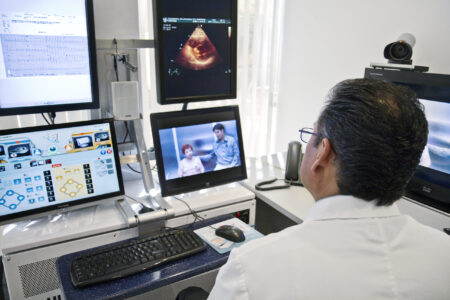Telehealth is an area that is very important to pay particular attention to when addressing the Health Insurance Portability and Accountability Act (HIPAA) compliance so it is important to be aware of the many different types of telehealth that have been created to put in place a strong connection for remotely located patients.
Telehealth normally includes collating healthcare data and sending it to medical experts and their patients. There are numerous different ways to provide telehealth care.
These include:
- Telemedicine in Real-time: This means to real-time appointments taking place between a medical professionals and patients who can be at any remote location. It includes all two-way communications conducted vua a video or phone link between the two parties. It is normally implemented for medical history reviews, visual updates, evaluations, and other treatments.
- Medical Imaging: Telehealth solutions make the sharing of X-rays much quicker, x-rays, and other images between a treatment team and external experts. Using this process, images can be overlooked at any time by an expert radiologist that is connected to the telehealth system. Due to the evolution of this solution patients are in a position where they can use a radiologist that is not located nearby them.
- Physician Collaborating: Using telehealth technologies, medical experts can communicate to enhance the treatment for the patients. For example, a primary physician can simply connect link up with an expert consultant without leaving the comfort of their office. Along with this this, physicians can communicate connect with a great many more specialists that previously when phone tag could have been the outcome of any effort to make contact.
- Remote Patient Monitoring: This gives those providing treatment the ability to review patients’ progress on their treatment without meeting them in person. This is a simple way of delivering care to patients who simply cannot attend a health centre for a physical appointment. It is also perfect for when a patient is suffering with a non-life threatening ailment that is long-term such as diabetes or COPD. In instances like this remote patient monitoring cuts patient time spent in hospital. The technology involved in this means that patient medical data can be constantly shared with the patient’s care team. This data will be sent automatically, leading to active ongoing care monitoring in a more passive data collection process. Should any problems with the patient come about, care team members can react swifty. Telehealth can put patients in a position to self-monitor and check in to lessen the workload of the caregiver and allow them to concentrate on other things.
- Store-and-forward: One of the main aims of using telehealth is store-and-forward. This is what is known as the storage of medical information such as images, test results, bio-signals, lab reports, and substantial documents can be downloaded and shared. This does not require the simultaneous attention of both the delivering and receiving parties. The data can be shared using different times and receiving points. A caregiver can collate the data, upload it and share it, and leave the data for review by a different supplier.
Key HIPAA Learnings
It is crucial to bear in mind that telehealth solutions must remain completely 100% secure at all times to prevent a breach of legislation such as HIPAA occurring. If you are thinking about using telehealth then you must see to it that you only use solutions that are 100% compliant with HIPAA.
Tha main things to remember in relation to the types of telehealth mentioned above are that:
- You must only ever allow authorized users to access any type of ePHI.
- In order to safeguard the integrity of ePHI a network of secure communication must be established.
- A process for reviewing ePHI related messages must be configured to prevent accidental or malicious breaches.
- A BAA must be established with third party partner that have any sort of access to ePHI
- Your staff must receive HIPAA training in order for accidental breaches of the legislation to be avoided.
If you are in any doubt about why you group needs to do in, in order to be using telehealth solutions in a HIPAA compliant manners, then you should contact an expert immediately in order to avoid being sanctioned with potentially financially debilitating penalties.


